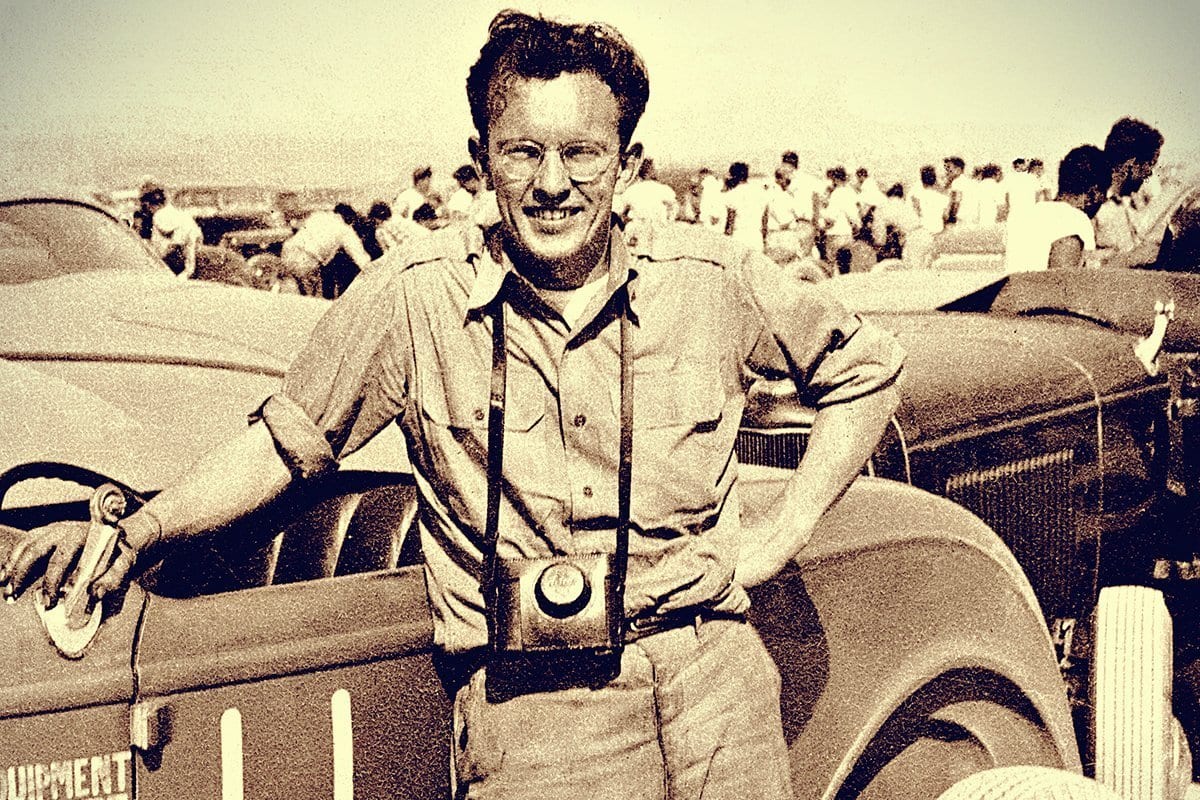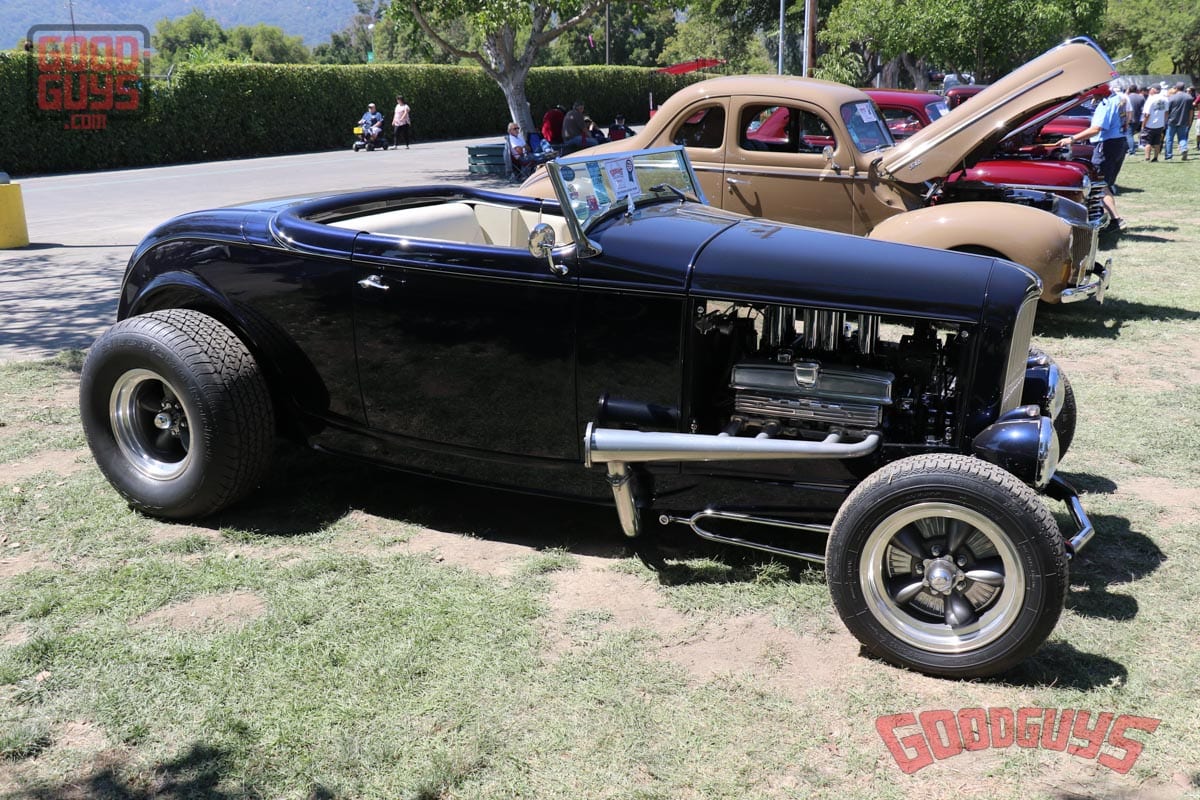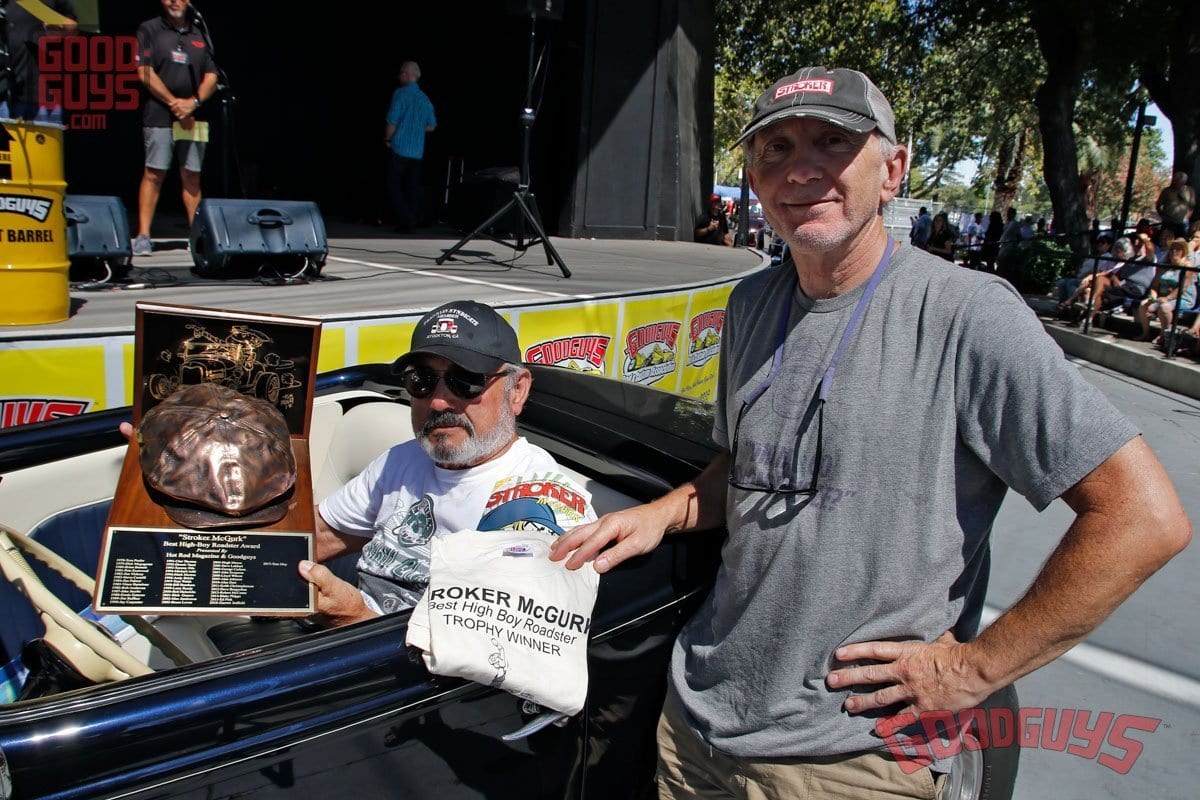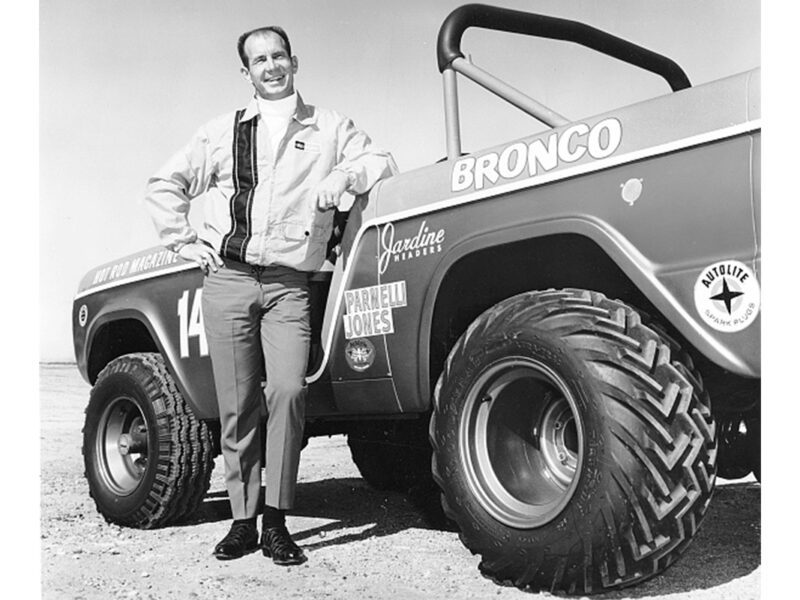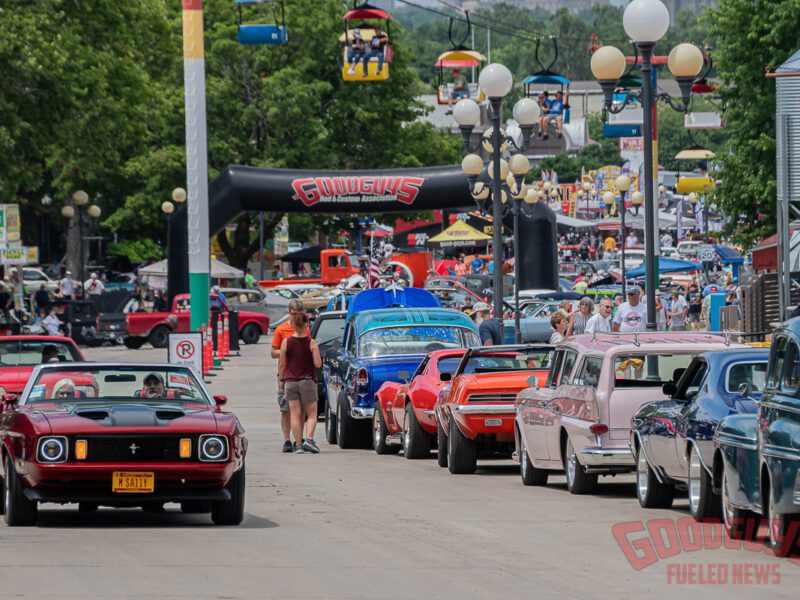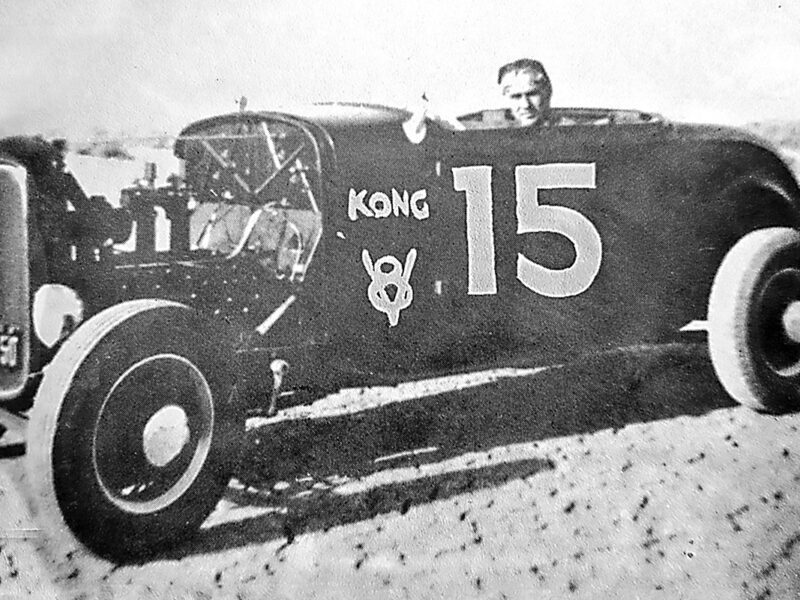Tom Medley: Stroker’d but Never Bored
 (Editor’s Note: This profile was assigned to a special guest columnist, the esteemed Stroker McGurk himself.)
(Editor’s Note: This profile was assigned to a special guest columnist, the esteemed Stroker McGurk himself.)
Wow, Tom Medley. Where to start?
I knew the guy from the very beginning. We go way back – back to 1948 when Tom Medley joined Hot Rod magazine. You could say we were drawn together by fate. He was 28 at the time, and during our six-decade friendship, he shared with me the story of his life, one that punched every ticket held by those of the Greatest Generation.
It only makes sense for me to share it with you. Here we go…
Tom Medley was born in Lebanon, Oregon, in 1920 to Dot and Edith Medley. Dad was a teacher and bookkeeper, mom a stay-at-home mom. Three experiences shaped his early life: exploring his grandfather’s homestead in nearby Cottage Grove, playing sports, and hitchhiking to Portland to watch roadsters race at Portland Speedway.
Basketball, though, was his true passion. He practiced endlessly. No local gym was immune to his breaking and entering, where he honed a deadly one-handed shot. By his senior year of high school he was all-state, which led to his first trip to Southern California in 1940 to play for Fullerton Junior College.
At Fullerton, TMed did more than “hoop.” He also hit on the pre-war LA hot rod scene and instantly became smitten by the many roadsters that prowled the streets of Tinseltown. (Little did I know that a ’29 highboy would be my calling card someday.)
World War II cut Medley’s basketball career short. The Army called in 1942 and he was sent to motor mechanic’s school in Nebraska, as a member of the 78th Infantry Division. One night, looking to break the monotony of Jeep maintenance schedules, he took in an USO dance in Omaha. While waiting for the bus back to the base, he noticed an attractive young woman exiting the dance hall, a woman with particularly winsome legs.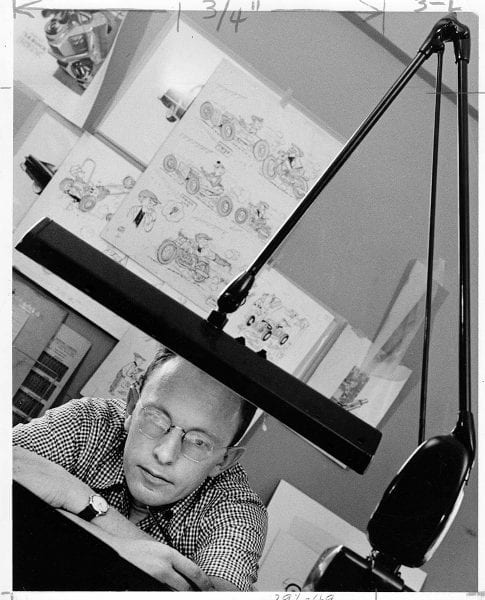
As she strolled by, Medley tugged her skirt. “I’d never marry a girl who couldn’t dance. Can you dance?” he asked with a grin.
Startled, Rosemary Fazio, a petite 19-year-old Italian dynamo, spun around, “What’d you say? Can I dance? Yeah, sure I can dance.”
“Okay,” ‘Medley quipped, “show me.”
And right there, under the YMCA marquee, to the beat of humming neon, the two clasped hands and began to jitterbug. A year later they danced down the aisle and were married.
Tom and Rosemary’s courtship had unforeseen consequences that played a pivotal role in his artistic career. Like many wartime romances, he wrote to his bride-to-be almost daily — and Medley adorned the missives with cartoons. These fanciful drawings captured more than his fiancé’s heart; they caught the attention of the brass at Camp Butner in North Carolina, who recruited him to work on the Division’s newspaper. There, he penned sports cartoons, inspirational posters, holiday cards, even a cartoon character named “Fearless Freddy Flash,” a scruffy G.I. who laughed at the challenges of being an enlisted man.
In November 1944 the 78th was sent to Belgium just in time to catch the pivotal Battle of the Bulge. Medley survived and eventually made it to Berlin. Along the way, he picked up a Bronze Star and a Super Ikonta B camera.
Upon his return in January 1946, Tom and Rosemary took up residence in Portland where he found employment at a top shop and learned to stitch upholstery. Art, though, was his deepest desire. Using work samples from the service, he applied and was accepted into the prestigious Los Angeles Art Center.
While at Art Center, he became gripped by the local hod rod scene. He drove his ’36 Ford roadster to the dry lakes and hung out at Blair’s Speed Shop in Pasadena. He also sketched cartoons about car culture, pinning them on the Blair bulletin board. It was at Blair’s that Medley was “discovered” by Robert E. Petersen, who had just launched a magazine called Hot Rod. Medley joined the staff on the second issue as “Humor and Cartoon Editor.”
“Stroker McGurk” first appeared as single-panel cartoon in the March 1948 issue. The following month, Medley expanded McGurk’s canvas to a multi-panel strip, no dialog, just pictures to tell the story. (He also had a strip in Cycle magazine called “Flat Out Snodgrass.”)
“T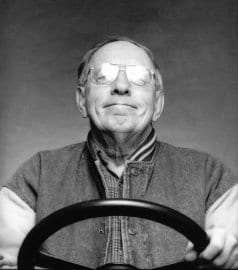 he idea,” Medley explained in the Best of Hot Rod book published in 1981, “was to create a character who would become the reader’s friend, one they could relate to through his trials and tribulations of just being a hot rodder.” Stroker concocted many crazy ideas that later were adopted by real car builders and racers. Multi-engine dragsters, wheelie bars, bubble tops, and the first-ever drag chute all sprung from Stroker’s fertile mind.
he idea,” Medley explained in the Best of Hot Rod book published in 1981, “was to create a character who would become the reader’s friend, one they could relate to through his trials and tribulations of just being a hot rodder.” Stroker concocted many crazy ideas that later were adopted by real car builders and racers. Multi-engine dragsters, wheelie bars, bubble tops, and the first-ever drag chute all sprung from Stroker’s fertile mind.
Stroker ran continuously in Hot Rod from 1948 to 1955, with a brief return in 1964 and 1965. Stroker’s last appearance in Hot Rod coincided with his move to Rod & Custom as publisher. With an all-star staff – Tex Smith, Bud Bryan, Jake Jacobs, Gray Baskerville – Rod & Custom launched the modern street rod movement, fueled by a signature cry – “Street is Neat.”
In keeping with the slogan, in 1970, Medley and the R&C staff put on the first Street Rod Nationals, which was clandestinely funded by a bogus $750 freelance check to Tex. The inaugural Street Rod Nationals took place in Peoria, Illinois, and to nearly everyone’s surprise, more than 700 rodders attended.
With an engaging manner and wacky sense of humor, Medley became one of the most beloved people in the hot rod hobby. Tex was one of his dearest friends. “What too few car guys understand,” Tex explained, “is that without Tom Medley and Rod & Custom, there likely would have never been a strong street rod sport, or a Street Rod Nationals, or a hot rod aftermarket industry.”
Medley was also close with Goodguys founder Gary Meadors, who like most hot rodders was a Stroker McGurk fan. Meadors recruited Medley to present a “Stroker McGurk” trophy at the Goodguys West Coast Nationals honoring the most bitchin’ highboy roadster. The award continues to this day – Bill Reis (seen below) was honored to receive the award in 2018 with his Deuce Roadster.
TMed retired in 1985, but he pegged life’s gas pedal against the floorboard for three more decades, until his passing in March 2014. He kept cartooning, built a ’40 Ford coupe, embraced vintage karting, and remained an inveterate 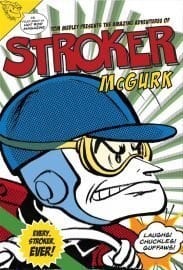 basketball junkie.
basketball junkie.
“I think many of my generation, those who came home from the War in one piece, felt that everything that happened from that point on was a bonus,” he once said. “I think that’s why I never get worked up about little things. A hundred years from now, they won’t matter.”
So, that’s the story. One thing that does matter, though, is that he created me, Stroker McGurk. I’m still hanging in there, cruising in my ’29 highboy, golf cap pulled low against the wind. For that, I tip that hat to you, Tom Medley. You should tip yours, too.

